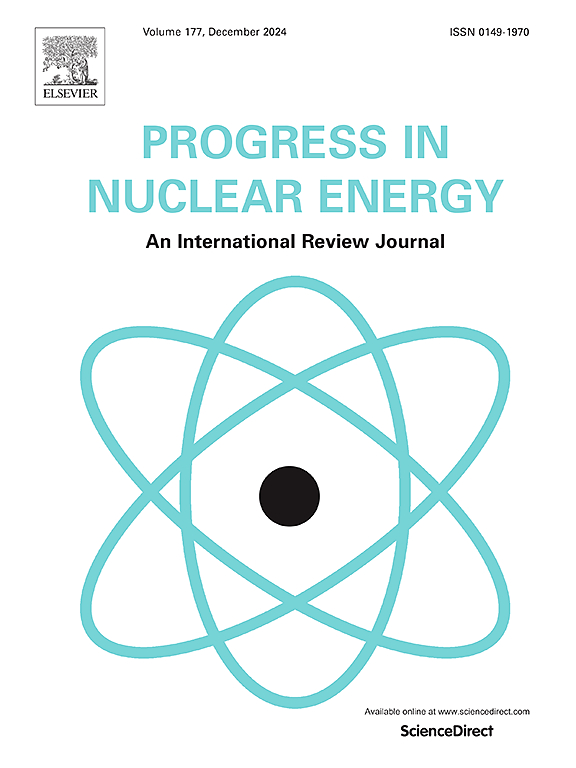深水平钻孔储存库上方低渗透岩石对固化高放废物隔离安全性的影响
IF 3.3
3区 工程技术
Q1 NUCLEAR SCIENCE & TECHNOLOGY
引用次数: 0
摘要
我们分析了深水平钻孔处理的高放废物(HLW)通过地下水的热对流输送放射性核素,以及以粘土岩为代表的上方低渗透地质构造的影响。通常,在几公里深处,地形驱动的地下水流动较弱,由此产生的流动受产生热量的高沸水包引起的对流控制。研究表明,水平钻孔的热对流比垂直钻孔弱得多。因此,水平钻孔的放射性核素迁移速率远低于垂直钻孔中类似的高浓缩铀处置。本文章由计算机程序翻译,如有差异,请以英文原文为准。
Influence of low permeable rocks above deep horizontal boreholes repository on the safety of solidified high level nuclear waste isolation
We analyze the transport of radionuclides by thermal convection of groundwater from high level radioactive waste (HLW) disposed of in deep horizontal boreholes and the effect of above-located low-permeable geological formations typically represented by clayey rocks. As a rule, the topography-driven groundwater flow at depths of several kilometers is weak, and the resulting flow is governed by convection caused by heat generating HLW packages. We show that thermal convection for horizontal boreholes is much weaker compared with vertical boreholes. Due to this the rate of radionuclides migration from the horizontal boreholes is much lower than from similar disposal of HLW in vertical boreholes.
求助全文
通过发布文献求助,成功后即可免费获取论文全文。
去求助
来源期刊

Progress in Nuclear Energy
工程技术-核科学技术
CiteScore
5.30
自引率
14.80%
发文量
331
审稿时长
3.5 months
期刊介绍:
Progress in Nuclear Energy is an international review journal covering all aspects of nuclear science and engineering. In keeping with the maturity of nuclear power, articles on safety, siting and environmental problems are encouraged, as are those associated with economics and fuel management. However, basic physics and engineering will remain an important aspect of the editorial policy. Articles published are either of a review nature or present new material in more depth. They are aimed at researchers and technically-oriented managers working in the nuclear energy field.
Please note the following:
1) PNE seeks high quality research papers which are medium to long in length. Short research papers should be submitted to the journal Annals in Nuclear Energy.
2) PNE reserves the right to reject papers which are based solely on routine application of computer codes used to produce reactor designs or explain existing reactor phenomena. Such papers, although worthy, are best left as laboratory reports whereas Progress in Nuclear Energy seeks papers of originality, which are archival in nature, in the fields of mathematical and experimental nuclear technology, including fission, fusion (blanket physics, radiation damage), safety, materials aspects, economics, etc.
3) Review papers, which may occasionally be invited, are particularly sought by the journal in these fields.
 求助内容:
求助内容: 应助结果提醒方式:
应助结果提醒方式:


